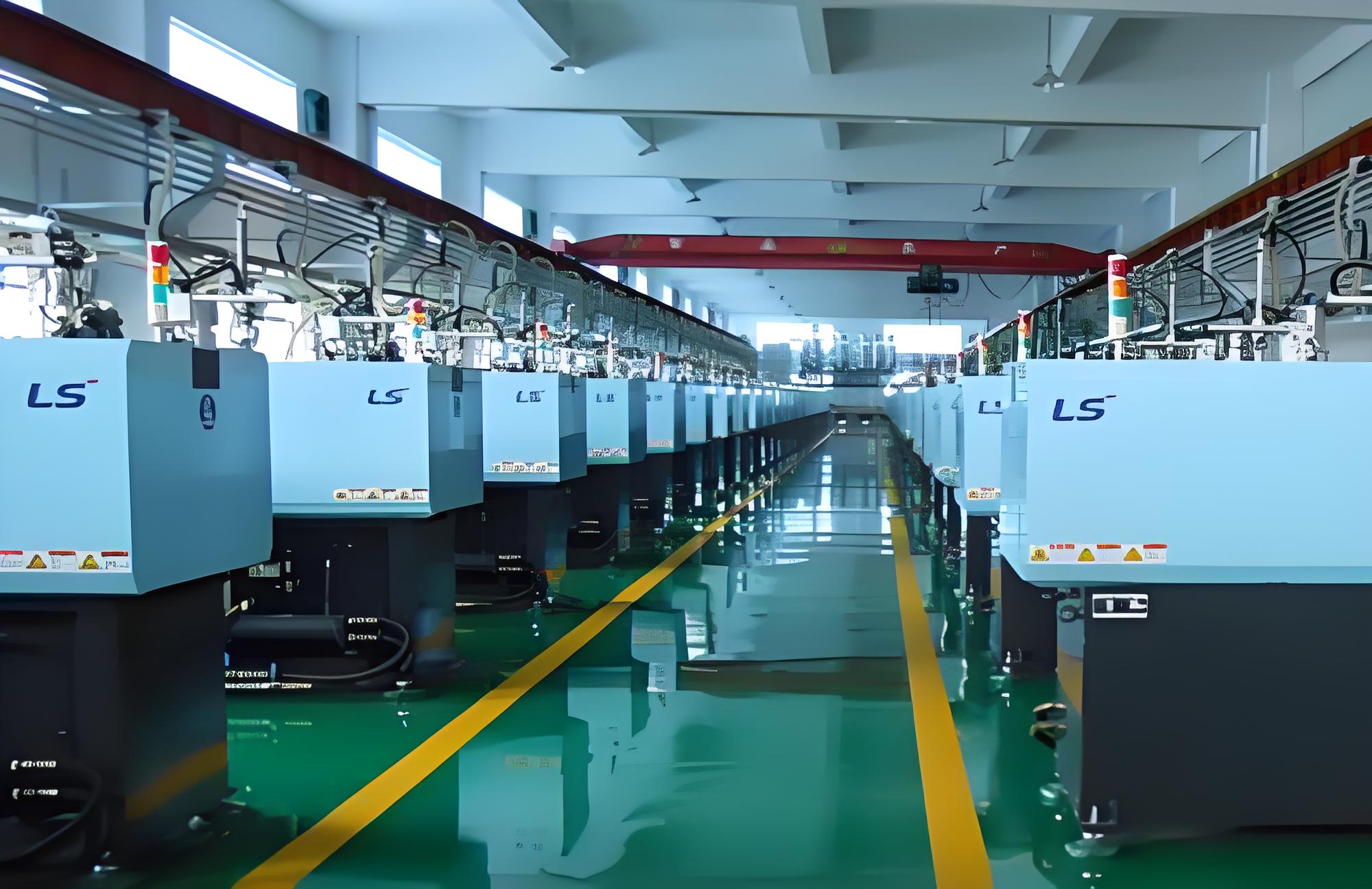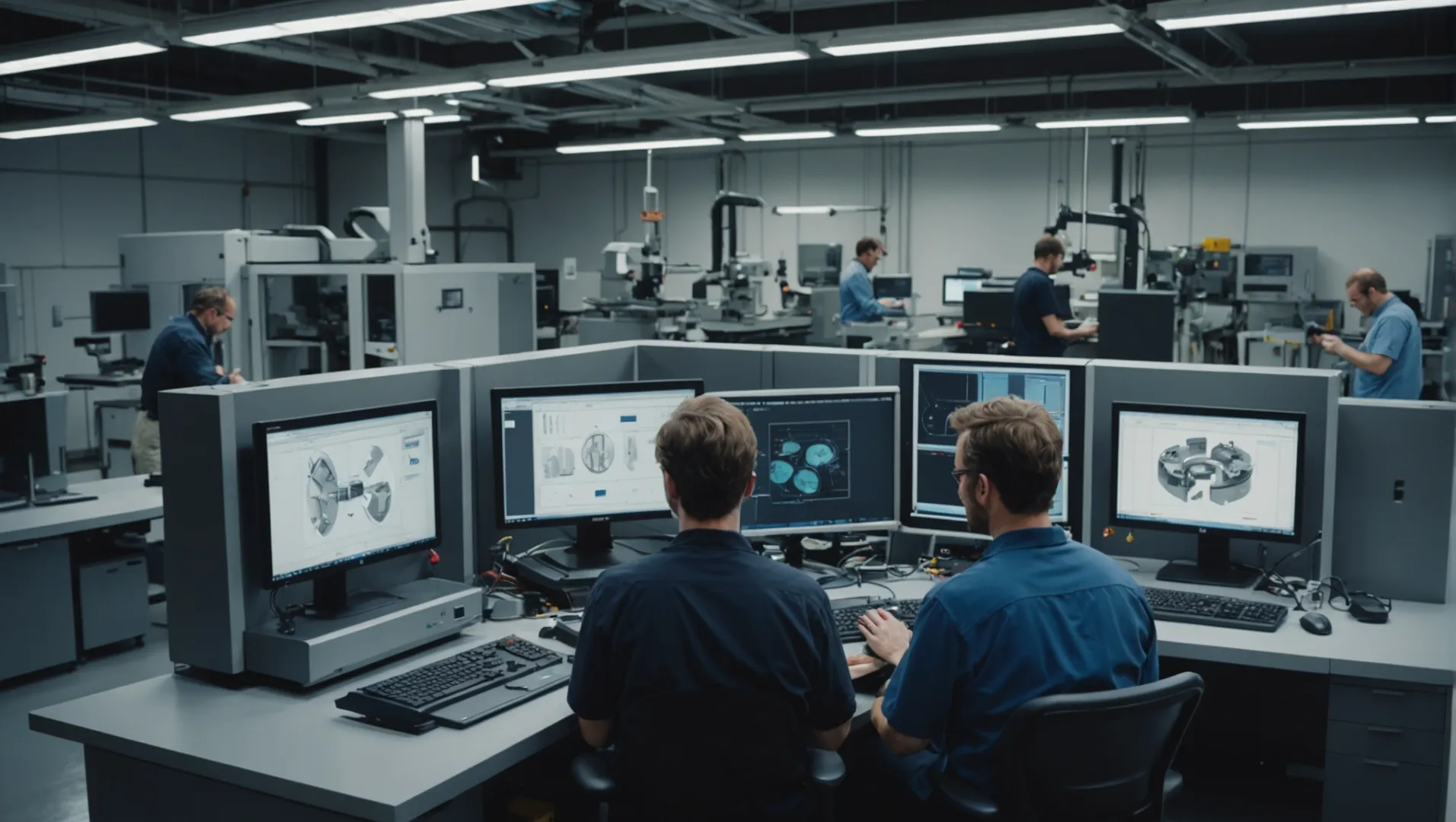
Have you ever considered the endless possibilities within the plastic mould manufacturing industry? It’s a world brimming with opportunities just waiting to be explored.
Opportunities in the plastic mould manufacturing business range from innovative product design and efficient mold production to high-quality injection molding services and robust quality control systems. Entrepreneurs can tap into these aspects to meet rising industrial demands and achieve business success.
As we dive deeper into this fascinating industry, you’ll discover strategic steps and valuable insights that can empower you to enhance your competitiveness and profitability. Let’s embark on this journey together!
Product design aligns with customer needs.True
Product design involves understanding and meeting specific customer requirements.
How Can Product Design Enhance Your Competitive Edge?
In today’s fast-paced market, exceptional product design is a crucial factor for companies seeking to stand out.
Product design enhances your competitive edge by aligning with customer needs, optimizing functionality, and improving manufacturability. This strategic approach not only elevates product quality but also drives efficiency in production processes, ultimately fostering business growth and differentiation in the market.

Aligning with Customer Needs
The cornerstone of successful product design lies in understanding and fulfilling customer needs. By designing plastic products tailored to specific requirements, companies can ensure their offerings are both functional and appealing. This involves a meticulous process of designing appearance1 and structural elements that meet usability standards while offering visual appeal.
Optimizing Product Functionality
A well-designed product must excel not only in form but also in function. Ensuring that a product performs effectively requires collaborative efforts2 between designers and engineers. This collaboration helps in refining features that enhance user experience and in integrating innovative solutions that set the product apart from competitors.
Enhancing Manufacturability
Manufacturability is a critical aspect that impacts both cost-effectiveness and production efficiency. By focusing on design elements that facilitate easier manufacturing processes, businesses can reduce lead times and lower production costs. The choice of materials3, such as steel or aluminum alloys, plays a pivotal role in determining manufacturability and overall product longevity.
Leveraging Technological Advancements
Adopting cutting-edge technologies in the design phase can significantly boost competitive advantage. Utilizing advanced software for simulations and prototyping allows for rapid iteration and testing, minimizing errors and enhancing precision. Additionally, integrating automation4 into design processes not only speeds up development but also ensures consistency and quality across products.
Sustainability as a Design Principle
Incorporating sustainability into product design can further distinguish a business in the market. Designing with environmentally friendly materials and processes not only meets growing consumer demands for green products but also aligns with global sustainability goals. This approach not only aids in reducing waste5 but also positions the company as a forward-thinking entity committed to environmental stewardship.
Product design aligns with customer needs.True
Understanding and fulfilling customer needs ensures product appeal.
Automation decreases product design consistency.False
Automation enhances consistency and quality in design processes.
What Are the Key Considerations in Mold Design and Manufacturing?
Mold design and manufacturing are pivotal in ensuring the quality and efficiency of plastic products.
Key considerations in mold design and manufacturing include product design alignment, material selection, component accuracy, process precision, and quality control. Addressing these aspects ensures the production of reliable, high-performing molds that meet customer expectations and industry standards.

Aligning Product Design with Mold Specifications
One of the foremost considerations in mold design and manufacturing is ensuring that the mold aligns seamlessly with the intended product design. This involves a thorough understanding of the product’s functional requirements6 and manufacturability. Designers must work closely with customers to translate their needs into feasible designs, incorporating both aesthetic and structural elements.
The design phase7 includes creating detailed plans for various mold components such as cavities, cores, sliders, and ejection mechanisms. These components must be precisely engineered to ensure stability and reliability during the molding process.
Selecting Appropriate Mold Materials
Material selection is another critical factor. The choice between steel, aluminum alloys, or other materials depends on the product’s complexity, production volume, and cost constraints. Steel is often preferred for its durability and ability to withstand high-volume production runs, while aluminum may be used for prototypes or lower volume projects due to its lighter weight and ease of machining.
A well-chosen material not only prolongs the mold’s life but also enhances the overall quality of the final product.
Ensuring Component Accuracy and Process Precision
The precision of each component within the mold is paramount. Advanced manufacturing processes such as EDM (Electrical Discharge Machining) and wire cutting are employed to achieve the required precision. Each component must be meticulously crafted to ensure it fits perfectly within the mold assembly, minimizing errors and ensuring smooth operation during production.
After manufacturing, molds undergo rigorous testing and debugging to verify their accuracy and performance. This stage is crucial for identifying any potential issues that could impact production efficiency or product quality.
Implementing Robust Quality Control Measures
Quality control is integral throughout the mold design and manufacturing process. A comprehensive quality control system ensures that every step—from design through to production—meets stringent standards. Utilizing tools like coordinate measuring machines (CMMs) allows manufacturers to detect deviations early and implement corrective measures promptly.
Incorporating robust testing methods not only enhances product reliability but also builds trust with customers by consistently delivering high-quality products.
By focusing on these key considerations, manufacturers can enhance their competitive edge8, meet customer expectations, and contribute to the overall success of their business.
Steel is always the best choice for mold materials.False
Steel is preferred for durability, but aluminum suits low-volume projects.
EDM enhances precision in mold component manufacturing.True
EDM is used to achieve high precision in mold components.
How Does Quality Control Impact Your Business Reputation?
Quality control is the backbone of maintaining and enhancing your business reputation.
Effective quality control ensures consistent product quality, meeting customer expectations and regulatory standards. This reliability strengthens your business reputation, fostering trust and long-term relationships with clients.

The Critical Role of Quality Control in Reputation Management
In the competitive landscape of plastic mold manufacturing, maintaining a stellar reputation is crucial for sustained success. Implementing a comprehensive quality control system is essential to ensure that your products consistently meet industry standards and customer expectations.
Building Customer Trust
Customers today are more discerning than ever, demanding products that are reliable and meet high-quality standards. A robust quality control system9 ensures that each product not only meets but exceeds these expectations, thus building trust and securing customer loyalty.
Navigating Industry Standards
In sectors like plastic mold manufacturing, adhering to stringent industry regulations is non-negotiable. Compliance with these standards through meticulous quality control can prevent costly recalls and legal issues, safeguarding your company’s reputation.
Implementing Effective Quality Control Measures
A successful quality control strategy involves several layers of checks and balances throughout the manufacturing process:
- Initial Design and Prototyping: Ensuring that the initial product design aligns with functional requirements and manufacturability standards. Collaboration with clients during this phase can preempt issues down the line.
- Material Selection: Choosing the right materials for mold production impacts durability and performance, which are critical to maintaining product quality.
- Manufacturing Process: Employing advanced testing equipment such as three-coordinate measuring machines to monitor production processes closely.
- Final Product Testing: Conducting rigorous testing on finished products to verify that they meet predefined quality benchmarks.
The Impact of Quality Control on Brand Image
Implementing stringent quality control measures can significantly enhance your brand’s image. Companies known for high-quality products often enjoy increased market share and can command premium pricing. Moreover, a positive reputation attracts new customers while retaining existing ones, driving business growth.
Consistent product quality also acts as a marketing tool, with satisfied customers becoming brand ambassadors who promote your business through word-of-mouth referrals.
Case Study: Successful Quality Control Implementation
A well-known example in the industry is XYZ Plastics, which overhauled its quality control procedures and saw a 30% increase in customer satisfaction. This strategic move not only enhanced its market position but also led to a substantial rise in its client base.
Quality control is not merely a function of compliance; it’s an integral part of your business strategy that directly influences your reputation and bottom line.
Quality control enhances customer trust.True
Effective quality control ensures products meet expectations, building trust.
Ignoring quality control can lead to legal issues.True
Non-compliance with industry standards may result in recalls and lawsuits.
What Role Does After-Sales Service Play in Customer Retention?
After-sales service is a crucial aspect of business that significantly influences customer loyalty and retention.
After-sales service plays a pivotal role in customer retention by providing ongoing support, solving issues promptly, and ensuring customer satisfaction. It builds trust and loyalty, encouraging repeat business and positive word-of-mouth referrals.

Enhancing Customer Satisfaction through Timely Support
In the competitive market of plastic mold manufacturing10, after-sales service is indispensable for maintaining customer satisfaction. This service includes providing prompt assistance with any issues encountered post-purchase. Businesses can offer technical support and training to help customers maximize the use of their products. Quick response times to customer queries or problems can significantly enhance satisfaction levels.
For example, if a customer experiences a malfunction with a mold, a company that offers immediate repair services not only solves the issue but also reassures the customer about the reliability of their purchase.
Building Trust and Loyalty
Consistent after-sales service fosters a sense of trust between the customer and the business. When customers know they can rely on a company for support, it enhances their loyalty. This trust often translates into repeat business, as customers prefer to continue working with companies that prioritize their needs even after the sale is completed.
According to experts in the industry, providing maintenance services to extend the life of molds can significantly reduce production costs for customers, which further strengthens their loyalty.
Encouraging Positive Word-of-Mouth Referrals
Satisfied customers are more likely to share their positive experiences with others. This word-of-mouth marketing is invaluable in an industry where reputation is critical. A robust after-sales service strategy can turn satisfied customers into brand advocates who promote the company to peers and other potential clients.
Moreover, offering comprehensive after-sales support, such as regular check-ins and updates on product maintenance tips, can keep your brand at the forefront of customers’ minds, encouraging them to recommend your services.
The Impact on Business Performance
Investing in after-sales service is not just beneficial for customers but also for the business itself. It can lead to increased revenue through repeat purchases and new customer acquisitions driven by referrals. Furthermore, as businesses in the plastic mold sector often deal with high-value contracts, retaining clients through excellent service can stabilize and even enhance revenue streams.
Ultimately, a strong focus on after-sales service aligns with creating a holistic customer experience that supports long-term business growth.
After-sales service enhances customer loyalty.True
Providing ongoing support builds trust, leading to repeat business.
Quick response times don't affect customer satisfaction.False
Prompt assistance significantly boosts satisfaction and retention rates.
Conclusion
In the world of plastic mould manufacturing, your focus on innovation, quality control, and customer service can pave the way for remarkable success.
-
Explore how appearance impacts customer perception and product success.: Products’ appearance design plays an important role in the success of product design. It is an important way for designers and users to exchange information … ↩
-
Discover how teamwork enhances product functionality and innovation.: The Benefits of Product Design Collaboration · Shared goal or vision – all team members are kept well informed and on the same page throughout the process. ↩
-
Learn how material selection affects production efficiency and quality.: The most common materials used for manufacturing are metal, plastic, wood, and composite materials such as carbon fiber. ↩
-
Find out how automation can streamline design processes.: Design automation lets you capture and reuse engineering knowledge and intent. Automation not only helps reduce errors and time spent on tedious, repetitive … ↩
-
Understand strategies for reducing waste through sustainable design.: Six Design Strategies · 1. Dematerialization · 2. Next-Best Material Selection · 3. Green Supply Chain · 4. Longevity and Effective Usage · 5. ↩
-
Learn how aligning mold design with product specs ensures quality outcomes.: Choosing the correct alignment lock can reduce maintenance expense and molding downtime, as well as increase part quality over the entire life of the mold. ↩
-
Explore detailed steps involved in designing effective mold components.: Learn the basics to the injection molding process, including: how it works, design principles, materials, and quality systems. ↩
-
Discover how precision in mold making enhances competitive advantage.: Injection molding can handle highly complex parts, provides uniformity, and offers the ability to make millions of virtually identical parts. ↩
-
Learn how quality control enhances manufacturing processes and improves overall product reliability.: Quality control ensures products go out on time, which is important to a brand’s reputation. ↩
-
Explore how after-sales service boosts loyalty and retains customers.: After-sales service is the support provided to customers after a purchase. Learn how it can increase customer lifetime value. ↩






